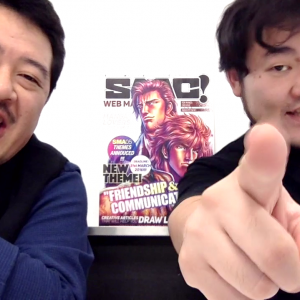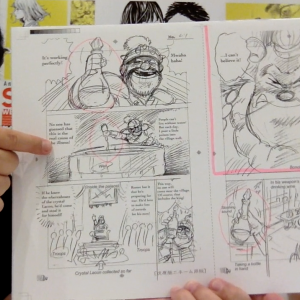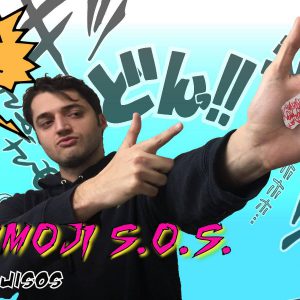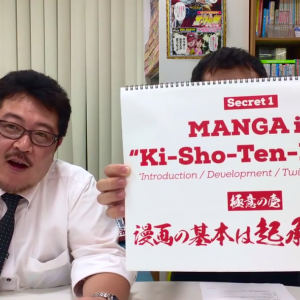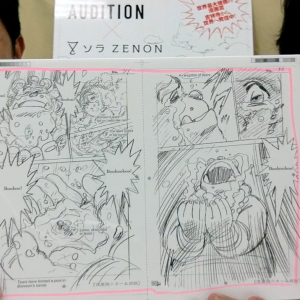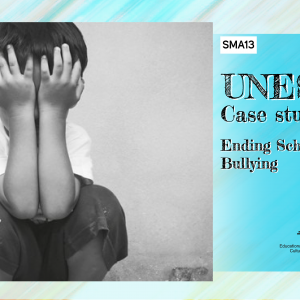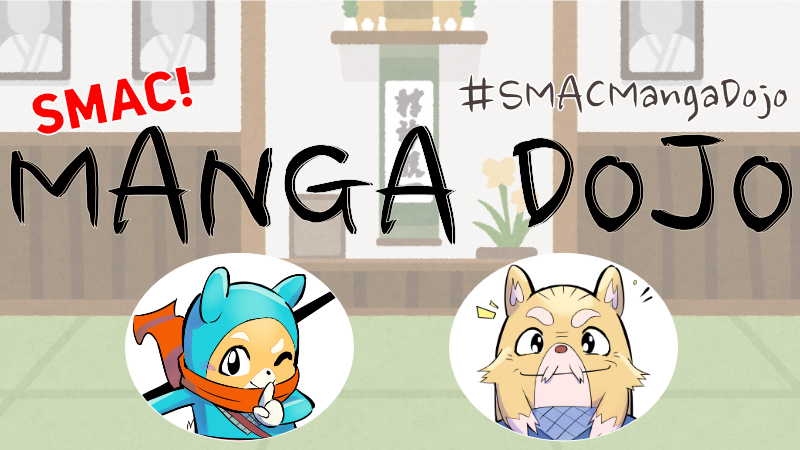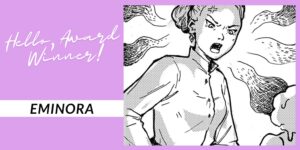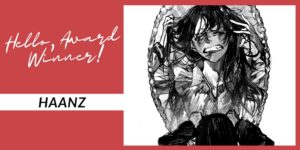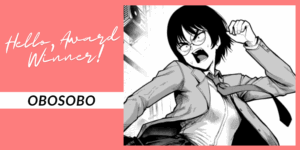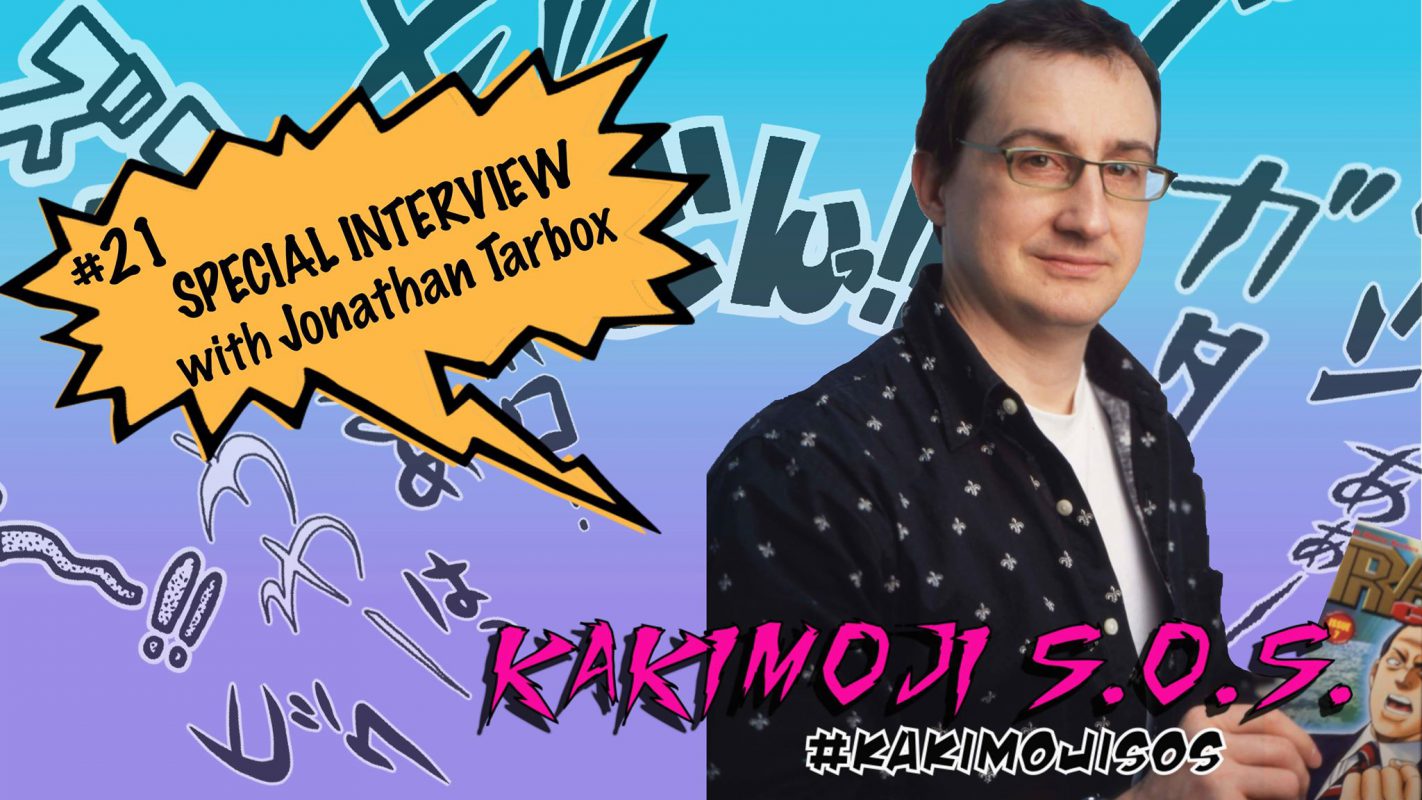
Kakimoji fan, CIAO!
Enrico, your friendly Kakimoji Hunter here (Whoops, sorry Brendan!).
Today, I am honored to announce a very special Kakimoji S.O.S…. a world exclusive interview with Jonathan Tarbox!
“Who is Jonathan Tarbox?” I hear you ask? Well, way back when, COAMIX was on a mission to entertain manga mad English readers with the publication of Raijin Comics! Featuring English translations of Souten no Ken, City Hunter and Slam Dunk, the success of Raijin was headed by Senior Editor Jonathan Tarbox.
A manga magazine for older audiences, Raijin Comics was sold primarily in North America from 2002 onwards, first as a weekly publication, then monthly. Included in the anthology were explanations of how to read manga (a useful tip for Western audiences), plus insights into the extra dialogues appearing outside of the balloons. But where Jonathan’s talents really shone, were in his special “Sound Effects Corner”, a dedicated article explaining all the kakimoji used in that month’s issue.
So it is my great honor to introduce to you, my kicking, cracking, Kakimoji senpai… Jonathan Tarbox!!
 Hello, Tarbox-san
ABOUT YOU:
1) Please introduce yourself.
Hello, Tarbox-san
ABOUT YOU:
1) Please introduce yourself.
Thank you very much! As you wrote in the frontispiece of each “Sound Effect Corner”, Kakimoji are not only representations of sound or noises, but an integral part of daily life for the Japanese audience. I hope to teach our readers an accurate analysis of what “Kakimoji” means to me, you and the manga pros from all around Japan! If you want to know more about Kakimoji remember to follow me on my SNS accounts and do not hesitate to ask me more specific questions (they may be included in future articles!)
CIAO!
_______
FOLLOW ME for more Kakimoji tips!
Twitter
Facebook
…and remember to use the hashtag #kakimojisos 😉
If you want to know more about Kakimoji remember to follow me on my SNS accounts and do not hesitate to ask me more specific questions (they may be included in future articles!)
CIAO!
_______
FOLLOW ME for more Kakimoji tips!
Twitter
Facebook
…and remember to use the hashtag #kakimojisos 😉
 Hello, Tarbox-san
ABOUT YOU:
1) Please introduce yourself.
Hello, Tarbox-san
ABOUT YOU:
1) Please introduce yourself.
Pleased to meet you all! My name is Jonathan Tarbox, although those who know me call me Jake. I’m from the United States, but don’t ask me to be more specific than that because I’ve moved around a heck of a lot. I’ve also lived in Japan, and now currently reside in Saudi Arabia.2) Can you talk about your very first encounter with Japan and what it meant to you?
I joined the Aikido club in college, where I must have got the “Japan” bug! By the time I graduated, I had started the “Go Club” and completed an East Asian studies minor without ever realizing it. If I could have taken one more semester of Japanese, I would have had a double major. But Japanese language studies at the college level were pretty lame back in the 20th century. During my final summer break before graduating, I took a summer job in Tokyo with the Japan International Friendship center, setting foot on Japanese soil for the first time. It was back in the wild days during the peak of the Japanese bubble. After college, I joined the very first year of the JET program and ended up spending most of the next 17 years in Japan. So what has it “mean” to me? Well, it changed my life in pretty much every way imaginable. I got to experience a culture that was completely modern, yet fundamentally different from American/Western culture. You can argue that Europe is different from America, but they are both grown from the same seed. Japan has incorporated an outer layer of westernization, but beneath it retains a core that’s a mixture of Asian continental and ethnic Japanese. It’s this difference, this uniqueness, that draws anime and manga fans from all over the world over. The result on me? I’ve got a Japanese wife and a Japanese daughter. I have black belts in three different martial arts. I’ve walked the Shikoku pilgrimage trail, and been a regular panelist on Japanese television. Almost every job I’ve had has had some connection to Japanese or Japan. Best of all, I’ve been able to work in the manga industry and have staffing/guesting at anime conventions all over America and the Middle East.ABOUT RAIJIN: 3) How did you start working with Raijin?
While I was working for the National Football League’s Tokyo office, I was recruited by Mr. Horie to become the International Affairs Coordinator for the Raijin Project. They needed someone with experience in international business affairs.4) What was your main role and how did it change over the years?
My main role at first was communication and coordination between Coamix and the American partners. At the time, there was a lot communication with AD Vision and other US companies, as well as the Coamix staff in American. Coamix were masters of manga publishing in Japan. But they soon realized that they had no one experienced in translation and localization. So I was quickly promoted to senior editor of the magazine “Raijin Comics.” And that’s when things really started to cook for me. I had to recruit a team of translators and manage the process of translating, editing and publishing a 200 page weekly magazine. The good news was that I got paid to read manga all day. The challenge was that I was working basically a 70 hour work-week for years. I gave up even trying to catch the last train home. Usually I took at cab at 2 or 3 a.m., and sometimes I took the first morning train to go home. I’d take a shower, get a few hours sleep, then hop back on the train and return to the Coamix offices. The best part was that I got to work with Horie Nobuhiko, Hojo Tsukasa and Hara Tetsuo—some of the most important manga creators in the history of the business. I got to experience the inner workings of a manga company and saw firsthand, how manga is created and sold. Moreover, I got to be part of the process. For a manga junkie like myself, I was living the dream.5) What was your favorite manga featured in the magazine?
My favorite manga was definitely City Hunter. The humor, the action, the dialog, the art… this series had it all. It was one of the most popular and influential series of its era, and it was a privilege to create the English version. I love all of Hojo Tsukasa’s work. I’d love to see more of it introduced to foreign audiences.ABOUT KAKIMOJI: 6) Why did you start creating the articles about Kakimoji?
When creating “Raijin Comics,” we quickly realized that kakimoji are much more complex than English sound effects. Manga fans wanted to know more about them. Part of our mission was to educate foreign fans about what manga was and how it worked. So we started the “Kakimoji Corner.”7) In your opinion, what does Kakimoji mean to a manga creator/manga editor/manga fan?
Kakimoji are much more than just sounds. They can indicate an actual sound, but also an emotional feeling. The Japanese language also has a lot of words that indicate how something moves, how it changes, how it feels. All of these words can be used in written or spoken Japanese as well as used for kakimoji. Manga, in its dialog, its kakimoji and its visual style, is much more focused on expressing subjective mood than on objective, photo-realistic reality. Using kakimoji along with visual cues like speed lines accomplishes this. As a art form, kakimoji allows the manga artist to use another element to tell the story. In American comics, the SFX are part of the letterer’s job, not the artist. But in Japan, the artist directly draws the kakimoji as an intrinsic part of the art. Let me explain a little about bringing manga to foreign markets. It’s not just a matter of translating the words, we have to create an entire package. Long story short, we call this process “localization.” Kakimoji are a localizers nightmare! They are no problem if they are in a balloon or floating in blank space. But many times they interwoven into the panel art. So what do we do with them? There are several solutions, all of them imperfect. 1. Replacement: take out the Japanese art and replace it with an English SFX. This involves redrawing art in the panels, and the Japanese creators hate it. The art always looks worse. 2. Subtitle: putting a small English translation of the kakimoji next to it in the art. Many people find this distracting, seeing this little English word in the middle of some action screen. 3. Caption: putting the English translation outside the panel. This save changing the art. But it pulls the eye away from the frame, and feels like you are reading a textbook with footnotes. Also, as any avid reader can tell you, many manga don’t have clearly defined panel boarders, so where do you place the caption? 4. Do nothing / no replacement: this preserves the art, and causes no distraction. But kakimoji provide important information, and if you can’t read Japanese, sometimes you miss an important part of the story if these aren’t translated. Whatever method is used, we had to get the Japanese creator’s approval.8) Do you have any anecdote about Kakimoji?
No one particular anecdote. Every single week it was a struggle. I’ve worked with Coamix, VIZ Media, DC Comics and other companies, and every company tried a different approach. I recall a few times when we had to redo the page several times because every replacement we tried was rejected by the Japanese creator.9) What was/were your favourite Kakimoji and why?
My favorite kakimoji is definitely “SHIIIIIN.” It was first created by “the God of Manga” Tezuka Osamu (Astro Boy, Kimba the White Lion), intended to show the sound of complete silence. Think about that for a moment. A sound effect that represents silence. But it’s really meaningful, and sets a mood. Imagine a scene where someone is in trouble, and they cry, “Isn’t anyone going to help me?” Then they look at the people around them and all just stare silently…SHIIIIIN. You don’t just feel silence; you feel the echo of loneliness.ONE LAST MESSAGE: 10) Do you have message for our young manga creators from around the world who are struggling understanding the proper usage of Kakimoji?
To me, “Kakimoji” only exist in Japanese. For a foreign creator, you have to learn to be very sensitive to how words are used in your own language to create both sound and mood. Then remember: you are a creator… so be creative! The originators of manga didn’t have any precedent. They invented this system from scratch. You can do the same thing. Create a visual vocabulary that works for you and your readers.
Thank you very much! As you wrote in the frontispiece of each “Sound Effect Corner”, Kakimoji are not only representations of sound or noises, but an integral part of daily life for the Japanese audience. I hope to teach our readers an accurate analysis of what “Kakimoji” means to me, you and the manga pros from all around Japan!
 If you want to know more about Kakimoji remember to follow me on my SNS accounts and do not hesitate to ask me more specific questions (they may be included in future articles!)
CIAO!
_______
FOLLOW ME for more Kakimoji tips!
Twitter
Facebook
…and remember to use the hashtag #kakimojisos 😉
If you want to know more about Kakimoji remember to follow me on my SNS accounts and do not hesitate to ask me more specific questions (they may be included in future articles!)
CIAO!
_______
FOLLOW ME for more Kakimoji tips!
Twitter
Facebook
…and remember to use the hashtag #kakimojisos 😉 











